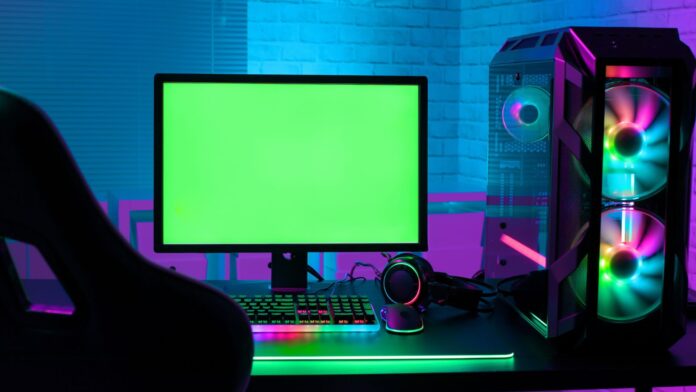ASrock Polychrome
If you’re looking to add some flair to your PC build, ASRock Polychrome might be just what you need. It’s a powerful RGB lighting control software designed specifically for ASRock motherboards. With this tool, you can sync and control the RGB lighting of your entire system, giving your rig a unified, aesthetically pleasing look.
ASRock Polychrome isn’t just about making your system look cool though. It also offers functional benefits. For instance, you can set the lights to change color or pattern based on system performance or temperature, giving you a visual indicator of your system’s status. It’s a blend of form and function that’s hard to beat.
How to Install Asrock Polychrome
Checking System Requirements
Firstly, it’s crucial to ensure that your machine meets the system requirements for running Asrock Polychrome. As this software is specially crafted for ASRock motherboards, it’s necessary to have one installed in your PC. More specifically, it should be one of the motherboard models listed as compatible on the Asrock Polychrome page.
Next, make sure your operating system is Windows 7 or later, as it isn’t compatible with earlier versions or other operating systems.
Downloading the Software
After you’ve confirmed your system’s compatibility, you can move onto downloading the software. The latest version of Asrock Polychrome can be found on ASRock’s official website. Simply navigate to their downloads page, find your specific motherboard model, and click on the “Download” button next to Asrock Polychrome.
It’s also important to point out that this software is completely free. So you won’t have to worry about any hidden charges or subscription fees.
Installing and Running the Program
Once you’ve got the software downloaded, it’s installation time. You’ll need to find and initiate the installer, usually in your downloads folder. Once you’ve initiated the installer, a prompt will pop up guiding you through the steps. Most importantly, keep an eye on any instructions or permissions that pop up, ensuring to accept them.
The installation process is typically quick and straightforward. After it finishes, you can start the Asrock Polychrome program from your start menu or desktop shortcut.
With Asrock Polychrome successfully installed and running, you’re now ready to dive into the wealth of features this software has to offer. You can begin synchronizing and personalizing the RGB lighting of your system to your heart’s content. With some experimentation and creativity, you’d be amazed at the vibrant technicolor dreamscapes you can design right on your PC. Small reminder: the power of the Asrock Polychrome lies not just in beautifying your PC, but also in how it can transform those colors into visual indicators of system performance and temperature.

Tips for Customizing Asrock Polychrome
Choosing the Right Color Scheme
Firstly, it’s crucial to select a color scheme that aligns well with your system and environment. ASRock Polychrome comes with an array of preset color options, such as “Dynamic”, “Static”, or “Breathing”.
Dynamic responds to system performance, changing colors with the ebb and flow of your PC’s workload. Static locks in one color, providing a steady ambiance while Breathing mimics the effect of gentle inhalation and exhalation of color.
I’d suggest trying them all out before settling on a favorite. Experimentation is key to achieving the visual effect you desire.
Syncing RGB Effects with Other Devices
ASRock Polychrome is even more captivating when synchronized with other RGB devices in your setup. The software enables you to match the light patterns of your motherboard with other peripherals such as mice, keyboards, and headsets to maintain a cohesive lighting aesthetic.
The trick is to find the ‘Sync with all devices’ option under the customization settings. Once enabled, the software automatically adjusts all your additional synchronized devices according to your specified settings.
Setting Multiple Lighting Profiles
Lastly, another fascinating option is setting multiple lighting profiles. This feature is quite handy if you’d like to switch between different color settings for various activities.
For instance, you might want a dynamic, vibrant color scheme when gaming, whereas a more subdued, static color might be appropriate for work.
Creating new lighting profiles isn’t complicated. All you need to do is click on the ‘Profile’ button, select ‘Add’ and then specify and save your preferred lighting settings.


